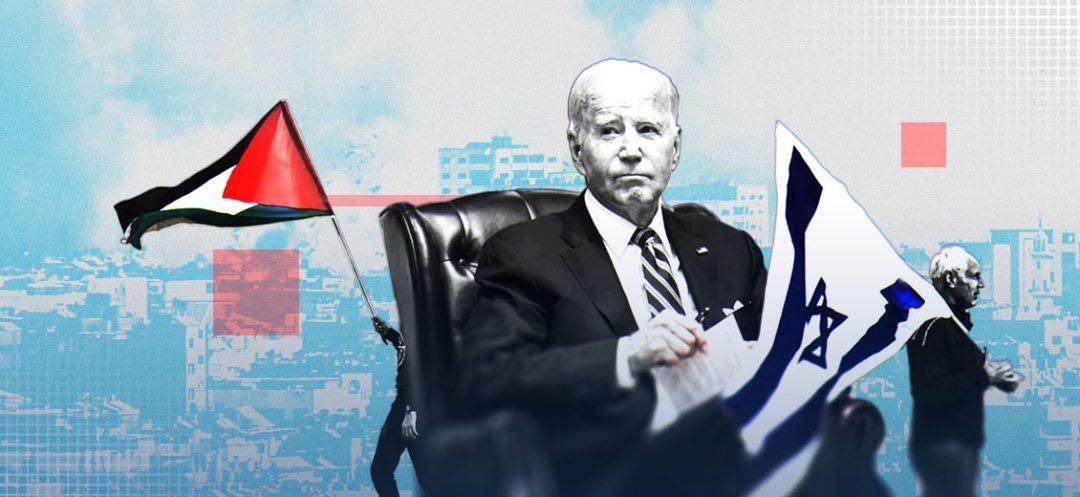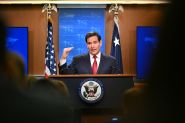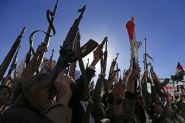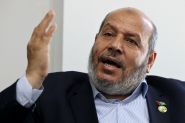- Home
- Middle East
- Equivocations of Truce

US President Joe Biden’s proposal for a lasting truce should be clarified and subjected to further elaboration and incremental amendments if it were to offer a true alternative to the actual doldrums. The sequenced truce framework falls short of its projected objectives unless it specifies the conditions of a sustainable political plan that curbs extremism on both sides, ends Hamas’ reign of terror, sets the markers of a new strategic mapping that neutralizes the security hazards that prevailed over the last 19 years which succeeded Israel’s withdrawal from Gaza, and rethinks its future as part of a comprehensive peace plan between Israelis and Palestinians. The truce plan is unlikely to create a new dynamic unless it pioneers a new political course equivalent to the Camp David, Oslo and Abraham accords, which diminishes the pitfalls of short shrift and rapidly souring security arrangements.
The reactions of the conflicting parties are quite indicative of their overriding political agendas. The ambivalence of the Israelis reflects their heightened security concerns after October 7, 2023, and their lack of consensus, be it at the war cabinet level, or within civil society whereby the hostage issue, and the conflicting views about strategic security and the future of the Israeli-Palestinian conflict, have not yet found their way into a consensual and final political understanding. As for the Palestinians, the welcoming reaction of Hamas reflects its interest in putting an end to the Israeli counteroffensive which questions its military viability, undermines its hegemonic yearnings among Palestinians and precludes its chances of retrieving control over Gaza. Both are wary about the truce process, whose political stipulations are not in line with their conflicting priorities, and behoove broader consultations all along the emerging political dynamic.
A working truce requires a strictly defined road map that connects the intermediary steps to an identifiable and consensual political objective. The tactical nature of the stipulations and their political evasiveness fail to uphold a consistent proposal unless they are tied to an overarching political vision. The purely tactical phrasing of the truce proposal is a prelude to a broader political scheme that associates the long-term truce with a transitional plan toward a full-fledged peace based on a negotiated political settlement. Still, the tenuous relationships between the two frameworks might be dooming the dynamic before it starts. Whatever might be the observations of the conflicting parties and their underlying motives, the issues at stake request a more energizing momentum to overcome ideological obstructionism, address strategic and security concerns, and tackle the irreconcilable political and military agendas. The war tragedies, which impelled all along the US political dynamic, are not enough to question the pertinence and the paramountcy of strategic security. Nonetheless, weariness on both sides is manifest and should be harnessed to pressure the political extremes and reengage the political dynamics created by the earlier accords, contain Iranian subversion politics, and reset the normalization process ushered by the Abraham accords and the US-Saudi negotiations targeted by the massacres of October 7, 2023.
Otherwise, the absence of a unified political platform among Palestinians, the pliability of their political mainstream to competing power politics (Arab, Islamic and international) and the sway of Hamas Islamic radicalism further the complications of the political tapestry and put at stake the projected truce. On their side, over the last two decades, Israelis have witnessed the strengthening of ideological irredentism and the rise of religious and ultranationalist extremism which challenged liberal Zionist and post-Zionist political credos and reduced their scope of influence. The recasting of the respective political landscapes around moderate and accommodating political objectives is a prequel to any political reconciliation between them.
Aside from the contending parties, we must re-situate the conflict within the political, ideological and strategic maelstrom that dominates the region and accounts for the nihilistic turn of conflicts and their highly destructive fallouts. The Iranian politics of subversion in the Middle East have become a major strategic lever to reckon with, and a defining ideological feature that intertwines with Sunnite militant Islamism. The modulations of political Islam are complicating the war scenarios and injecting a dose of extremism that can hardly be overlooked if we were to address the emblematic Israeli-Palestinian conflict which condenses the ambiguities of the regional political and religious cultures and accounts for their inability to adjust to the predicates of political modernity: axiological pluralism, constitutional statehood, consociational democracy and negotiated conflict resolution. These intellectual deficits are far from being tangential when it comes to conflict management and practical conflict resolution in the Middle East.
The influence of Islamic totalitarianism is counterbalanced by its flawed political, economic and societal records which question its credibility and the widening gaps between its pronouncements and achievements. The Iranian Islamic Revolution is a debunked mythology, and its survival owes to the politics of brutal repression and aggressive expansionism throughout the Middle East. The interfaces between Israel, Southern Lebanon, Eastern Syria and Gaza are located on a linear strategic continuum and should be addressed as an integrated operational platform from a military and diplomatic standpoint. Palestinian extremism and double-talk are sources of insecurity that Israel cannot overlook after the October 7 debacle, whereas Israeli ultranationalist and religious Right political vision and random colonization are detrimental to any projected normalization. The strategic and security issues should be addressed all along the delineated geopolitical spectrum if the truce is to take hold and serve as a platform for a negotiated peace agreement.
Read more



Comments